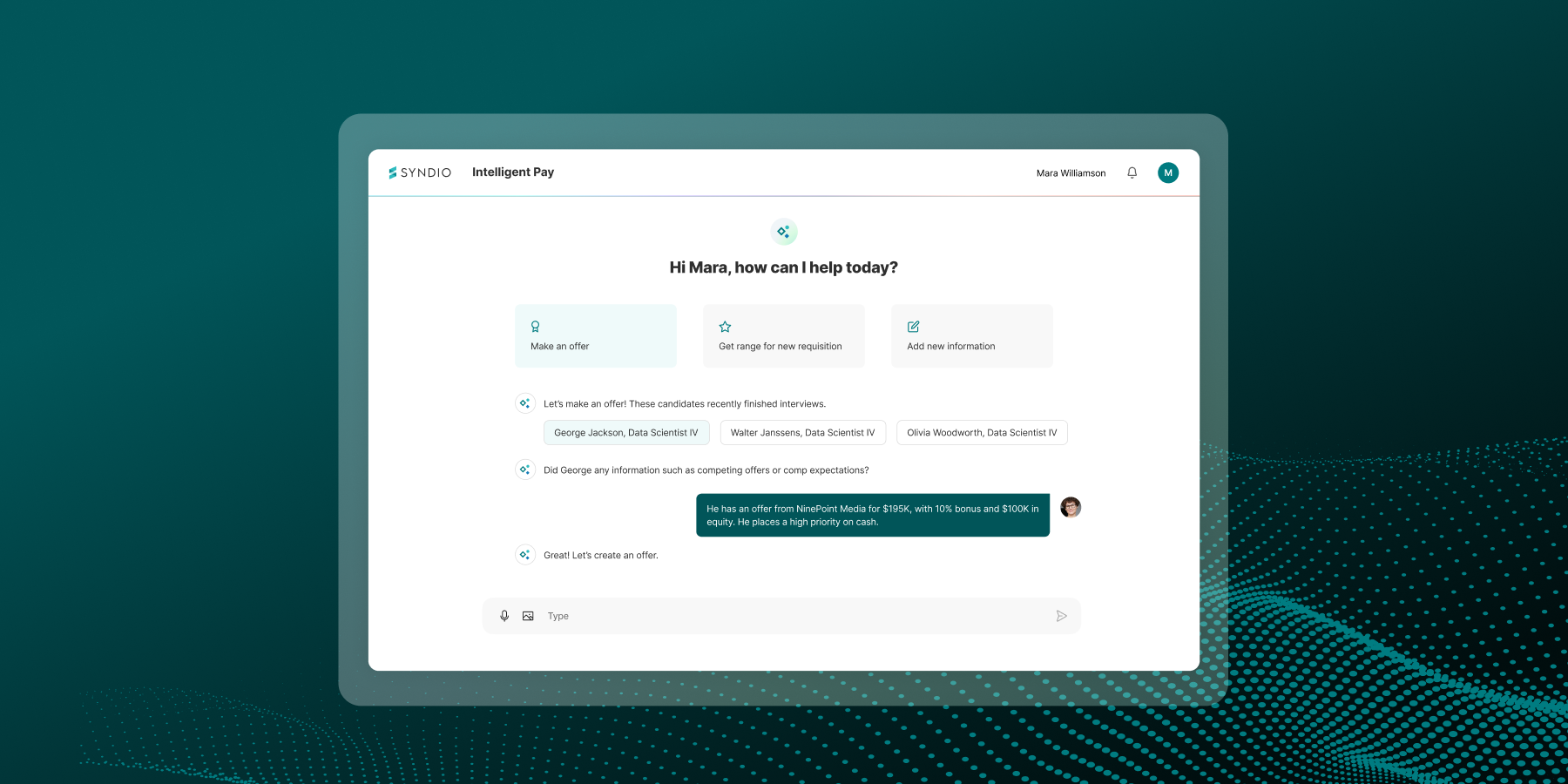Despite public diversity pledges and investments in DE&I programs, the tech industry continues to lack a pay equity strategy — leading to a lack of progress.
According to Dice’s 2022 Equality in Tech Report: Perception of Race and Gender Discrimination and Equality, perception of discrimination including salary and benefit inequities and lack of leadership opportunities rose between 2020 and 2021 for both Black technologist respondents and technologists who identify as women. Hired’s 2021 Impact Report: Wage Inequality in the Workplace found that 59% of the time, men were offered higher salaries than women for the same job title at the same company, and Black candidates saw wages that were 4% lower than the baseline.
Why does tech still have such a long way to go when it comes to pay equity?
Pay equity is a complex undertaking for every industry, but tech companies face some particular challenges. Many tech companies have widely distributed workforces — meaning multiple talent pools, costs of labor, and currencies to account for in their pay equity strategies.
Tech companies also often have incentives and equity plans complicating the pay calculation mix. Mergers and acquisitions are a higher likelihood in tech than many other industries, bringing a new level of complexity to pay equity analyses as companies merge whole sets of different compensation programs. And tech remains one of the most highly competitive and talent markets with the highest turnover, putting additional pressures on companies to get pay equity right if they want to attract and retain top talent.
There’s also a layer of pressures facing companies in every industry that are raising the stakes for pay equity and transparency: more peers are disclosing their diversity and pay equity metrics, employees are sharing pay salaries among themselves, investors and boards are demanding transparency on ESG factors such as social impact, and pay transparency legislation in the U.S. is rapidly changing and expanding.
To manage all of the moving parts that impact pay equity outcomes, companies need a scalable pay equity strategy that will grow with them. Where to begin?
6 strategies to successfully scale pay equity
1. Use a modern, agile pay equity SaaS solution.
Traditional pay equity analyses are manual, siloed, and complex. Building out in-house pay equity tools is neither efficient nor scalable, especially during phases of rapid growth. Salesforce experienced this challenge as they grew globally, with over 56,000 employees across 28 countries. Handling pay inequity in-house at that scale of growth became difficult and they knew they needed to find a technology solution designed specifically for pay equity.
“The bigger we got and the more global we got, the more challenging it became to do this [i.e. pay equity analyses] in-house. We chose to partner with Syndio because their core purpose is pay equity, and their team is going to be farther ahead in their thinking, so they could push us, and we could learn from them.”
Steve Dunlap, former Salesforce EVP of Global Rewards
PayEQ™, a component of Syndio’s Workplace Equity Platform, helps you analyze, resolve, and prevent pay disparities. The expertise of statisticians, labor economists, data scientists, and lawyers is baked into the best practice methodologies driving the software. PayEQ™ uses best-in-class statistical analyses to identify pay disparities due to gender, race, or any other demographic and provide remediation recommendations to address them at key moments in your compensation cycle. It allows you to slice employee groups in different ways to understand what factors are influencing top-line metrics, and makes it easy to quickly adjust for new data.
Using a purpose-built pay equity software solution frees up total rewards and compensation teams to focus on enhancing and expanding their overall pay equity strategy as the company grows, moving more quickly from the math to insights. As Salesforce’s former EVP of Global Rewards Stan Dunlap stated, “Having a third-party partner like Syndio has allowed us to comfortably focus not on the technology and the stats behind the tool itself, but on our strategy and how we approach [pay equity] for our employees.”
2. Partner with experts.
When it comes to something as complex and variable as pay equity — where data inputs and constraints will be unique to each organization’s population and goals — you need more than technology alone. Companies also need expert guidance to ensure they are addressing the complexities of their organizations and have full access to best practices. Syndio provides dedicated access to our team of expert advisors, including data scientists, legal professionals, and Total Rewards/Compensation specialists from day one.
Having access to a bench of advisors with deep expertise is especially crucial during rapid growth. Each new employment market or acquisition brings challenges such as new legislative requirements, new talent market pressures, and organizational designs in need of integration with current frameworks.
For example, Syndio’s expert advisors help our tech clients scale pay equity by:
- Assisting in complex global analyses when growing into new countries and job markets that have different currencies, rules, and reporting requirements.
- Advising on how to incorporate multiple types of compensation (e.g. base, bonuses, stock equity) into analyses and deal with large organizational changes such as M&As.
- Providing guidance on preparing for new legislation — including helping you model out to see around corners and anticipate the impact of changes.
3. Move to more frequent analyses.
Pay equity analyses have traditionally been performed annually. But because every new hire impacts the overall balance of pay equity, the faster your company grows, the more quickly a pay equity analysis becomes outdated. This turns annual remediation into a reactive exercise that is only able to temporarily plug the gap, rather than a proactive approach that strives to remove the gap entirely.
Rather than an annual compliance exercise around the merit cycle, there is more value to performing pay equity analyses any time compensation decisions happen: such as during re-organizations, promotions, and M&A. Regularly revisiting your pay equity audit with a fresh data set using the same groupings and controls will help you confirm that organizational changes don’t result in new inequities.
Thus, frequent pay equity analyses are becoming the gold standard that leading companies are adopting in order to become proactive around pay equity.
4. Take a proactive, preventive approach.
One of the biggest challenges that rapidly-growing companies competing for critical talent face is ensuring alignment between new hire salaries and pay for current employees. New hire salaries may create unintended pay differences.
Total Rewards/Compensation teams try to solve for this by providing guidance to recruiters that is informed by market data and averages of current pay, but this falls short and is difficult to operationalize efficiently. This quickly becomes a driver of pay inequities.
To get ahead of this, leading companies use solutions like Syndio’s Pay Finder™ to provide hiring teams with real-time insights into what salaries are fair and competitive for every candidate. It creates an “equitable range” of pay informed by the pay equity analysis, providing a much more reliable understanding of how employees are currently paid in a given job in alignment with the criteria used to hire new candidates.
This, brought together with the company’s salary range and/or market data for a job, guides new hire pay decisions that are both internally equitable and externally competitive, helping companies prevent pay inequities before they happen.
Another approach by leading companies is to better understand how their pay programs may be contributing to pay inequities. For example, our clients use Syndio’s Pay Policy Analytics™ to analyze what is driving pay (e.g. is it level? location? performance?), whether groups of employees are experiencing pay programs in the same way (e.g. do we pay underrepresented groups managing employees in the same way we pay other groups?), and even whether pay programs are being administered in the same way (e.g. is this manager rewarding employees the same as that manager?). This allows them then to prioritize where and what changes may be needed to ensure they can maintain pay equity.
5. Understand that equity is about more than pay.
Pay is a symptom of the broader employee experience. To understand the full picture of workplace equity at their companies, employers have to go further than equal pay for equal work. The pay gap is about opportunity: Companies must address inequities in hiring, promotions, performance assessments, and retention.
Opportunity gaps happen in a number of ways in the employee lifecycle, including at the beginning of tech careers. According to stats rounded up by Built In, 48% of women in STEM jobs report discriminatory recruitment and hiring. Black women and Hispanic women who majored in computer science or engineering are less likely to be hired into a tech role than white counterparts.
They also happen mid-career. Many companies experience a “leaky bucket” where women and people of color advance at lower rates or leave at higher rates. In fact, 39% of women view gender bias as the main reason for not being offered a promotion, and 66% of women report that there is no clear career path for them at their current job. Additionally, 53% of Black technologists reported lack of leadership opportunities as the most common form of racial discrimination at their company.
Leading companies are using robust analytics to unpack where inequities are taking place during the employee lifecycle so they can create and implement plans of action. For example, Syndio’s OppEQ™ analyzes the current makeup of a company and benchmarks against available talent across all departments, levels, and locations. This allows the company to identify, set, and report on meaningful diversity goals. The analyses also dig into talent management processes by identifying statistically significant inequities in hiring, promotions, performance assessments, and retention.
This helps companies prioritize their biggest areas of opportunity so they can focus on making investments in talent management strategies and programs that will help to achieve both equitable representation and equitable access to opportunities over time.
6. Take a holistic approach and unify all aspects of managing workplace equity in one place.
All of the above strategies will help your organization stay ahead as you grow, but there are a lot of moving parts. Companies have traditionally been challenged to find an efficient way of bringing together data, analytics and insights to be accessed by different teams. Without centralization, it is difficult to collaborate in a nimble and strategic manner.
That’s why our clients have been using Syndio’s Workplace Equity Platform to bring all of these components together in one place.
The platform provides line of sight between HR, Total Rewards/Compensation, and DE&I teams. Dashboards, 1-click reports, and real-time insights make it easy to put information in the hands of decision-makers for a variety of purposes, including providing disclosures to investors and boards.
Most importantly, it helps you make real, sustainable progress by moving away from manual, reactive processes to a modern, automated approach that is both proactive and preventive. Companies are empowered to address the sources of systemic workplace inequity — even at a global scale.
Case study: Databricks fast-tracks global pay equity
A great example of how quickly a tech company can establish an effective pay equity management program is Databricks, an enterprise data and artificial intelligence (AI) software company that is growing rapidly across the globe. They had never done a pay equity analysis before partnering with Syndio. By leveraging Syndio’s Workplace Equity Platform and expert advisors, Databricks was able to quickly go from pay equity beginners to establishing a modern pay equity strategy that has contributed to employer awards and a Fair Pay Workplace certification.
Whatever your starting point, establishing and scaling pay equity is within reach.
The stakes are high and there are unique challenges for tech companies when it comes to getting pay equity right, but the important thing is to start. With the help of Syndio’s expert advisors and the efficiencies created by our Workplace Equity Platform, your team can focus first on building a foundation of modern pay equity analyses and processes, then scale to prevent pay disparities in starting pay, understand how pay policies impact equity, and measure and improve opportunity equity and diversity.
Starting now by establishing a pay equity strategy will help you keep up with pay equity as your company grows — and with Syndio, you don’t have to do it alone. See for yourself.
The information provided herein does not, and is not intended to, constitute legal advice. All information, content, and materials are provided for general informational purposes only. Links to third-party or government websites are offered for the convenience of the reader; Syndio is not responsible for the content on linked pages.



